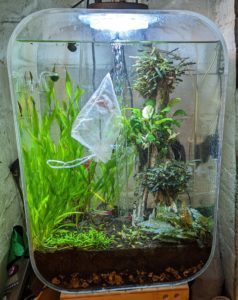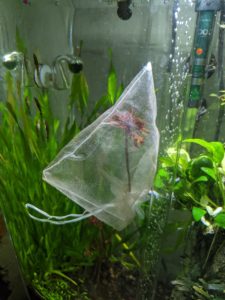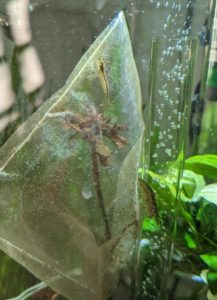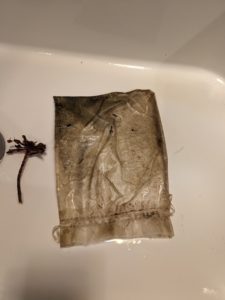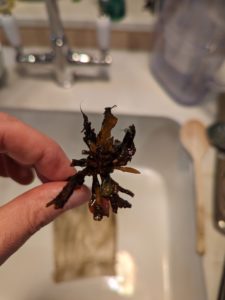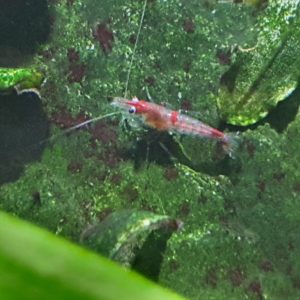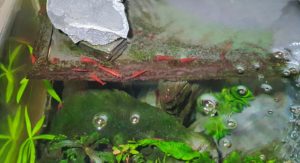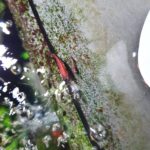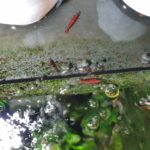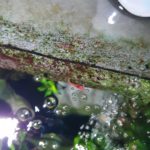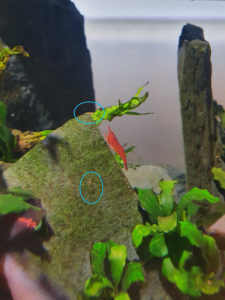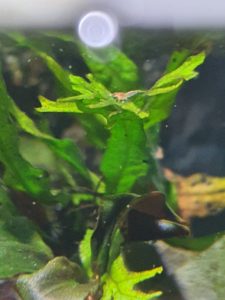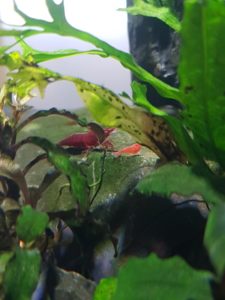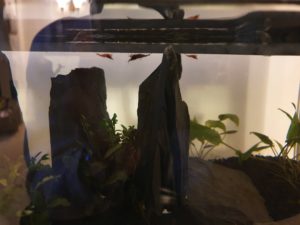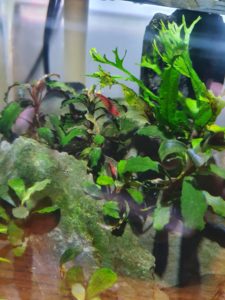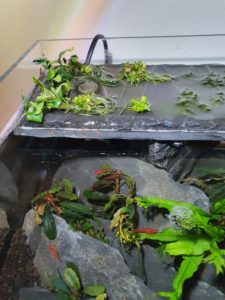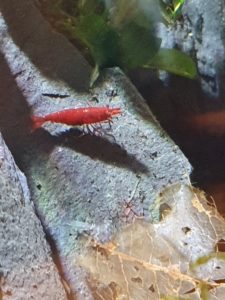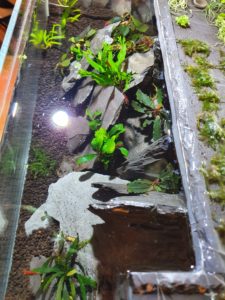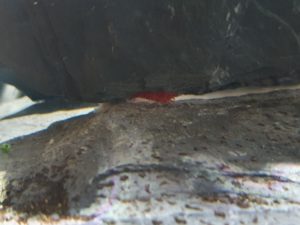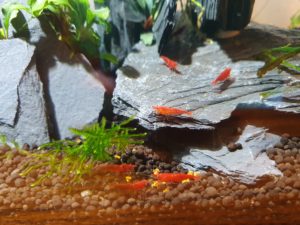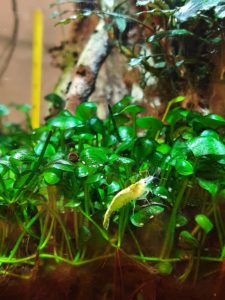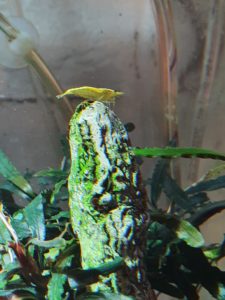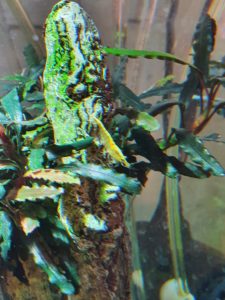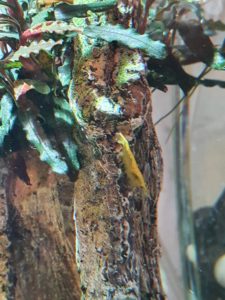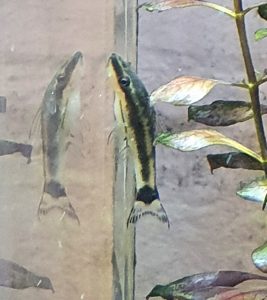It’s been more than four months since the Alternanthera reineckii ‘Rosanervig’ got planted in the Fireplace Aquarium, and whilst it seemed to be doing well initially, after 11 weeks things weren’t looking so great. I thought lack of light from overgrowing Bucephalandra caterina might have been contributory, so I did a massive epiphyte trim to restore light to most of the tank. That had very positive effects on the Cryptocoryne wendtii ‘Flamingo’ but didn’t really improve the alternanthera. There were floating fragments of what looked like otherwise healthy Rosanervig leaves and I have from time to time noticed some suspicious interest in the alternanthera from the amano shrimp. Some surveys of the interwebs suggests that amano shrimp eating alternanthera species is a known thing which could explain the observed damage.
As an experiment, I have shielded the top of one of the Alternanthera stems inside a mesh bag. The aquarium denisens haven’t particularly noticed, although I did see a cheeky amano shrimp sitting on the bag – it scampered when I tried to take its picture. We’ll do an updated report after a while to see how the bagged plant compares to its non-bagged counterparts.
Two week update: shrimp-proof bag fail
Well… it seemed like a good idea anyway. Whilst the shrimp-proof bag did keep the shrimp away from the alternanthera, the bag became a major breeding substrate for black beard algae and the plant inside the bag with no meaningful flow and no access to a cleaning crew did not thrive. Not only that, but I couldn’t get the bag off and wound up tearing the head off the plant in the process! Looking at it after the fact showed a few new leaves had sprouted so the plant was giving it a try.
That being said, in the ensuing carnage I did notice there was an alternanthera plant not in the bag that seems to be doing reasonably well, so I moved that over to the front of the aquarium and we’ll see how that does.
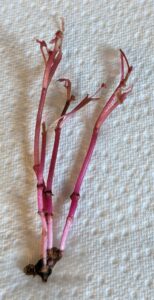
Amano shrimp eat Rosanervig
They really do! I tried it again with the Alternanthera reineckii ‘Rosanervig’ and the amano shrimp thanks me for the expensive, highly decorative tasty snack. Honestly! I wonder if it’s just the Rosanervig they find particularly yummy since the Alternanthera reineckii ‘Mini’ seems to be doing ok (but not super great).
